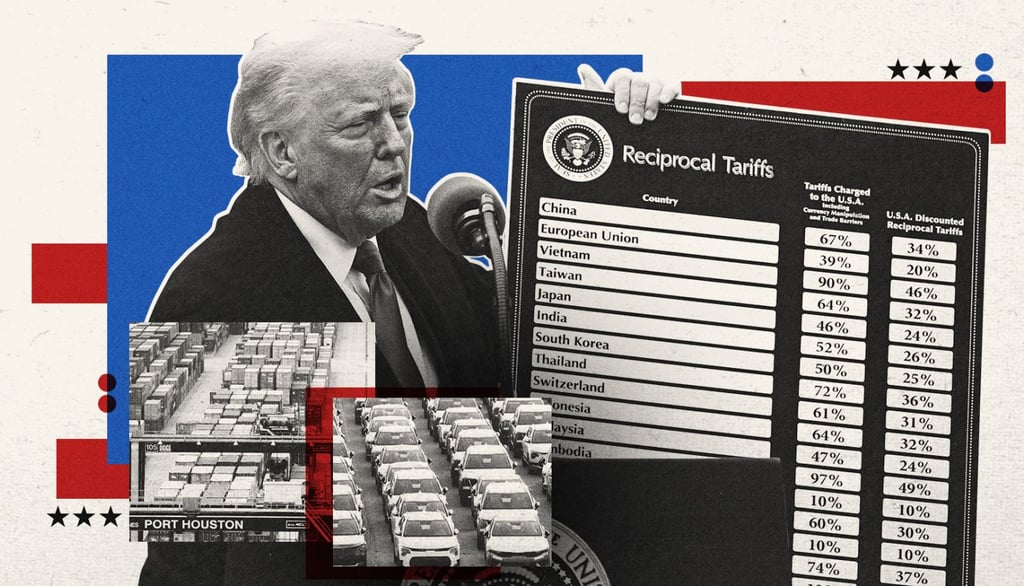Why the New U.S. Tariffs Could Be a Blessing in Disguise for Kenya
Although recent U.S. tariffs have raised serious concerns for Kenyan exporters, they may ultimately serve as a catalyst for long-overdue economic diversification, regional trade growth, and reduced overreliance on American markets.
OPINIONBUSINESS
Emmanuel Makome
4/29/20252 min read


When the Trump administration announced a blanket 10% tariff on imports from 185 countries in April 2025 — including Kenya — the initial reaction was understandably one of alarm. With the cumulative tariff for Kenyan goods now hitting 20%, many fear that key industries like textiles and agriculture will suffer heavy blows.
However, if we look beyond the immediate disruptions, these new tariffs may actually present Kenya with a unique and timely opportunity to restructure its trade relationships, strengthen regional economic ties, and build a more resilient, diversified economy.
A Wake-Up Call for Diversification
For too long, Kenya has been overly dependent on preferential trade access to the U.S. market through programs like the African Growth and Opportunity Act (AGOA). The looming expiry of AGOA in September 2025 and the current tariff increases should serve as a wake-up call: Kenya must expand its horizons and diversify its export markets.
By reducing overreliance on the U.S., Kenya can protect itself from future policy swings in Washington. It also forces Kenyan firms to become more competitive globally, driving innovation, quality improvements, and value addition.
Boost for Intra-African Trade
One of the most exciting outcomes of the tariff situation is the renewed focus on the African Continental Free Trade Area (AfCFTA). With easier access to a massive and growing regional market, Kenyan businesses have a chance to find new customers closer to home.
The regional focus will also mean shorter supply chains, reduced logistical costs, and stronger political and economic bonds across Africa — all essential ingredients for sustainable, long-term growth.
Strategic Sectoral Shifts
While textiles may suffer in the short term, sectors like tea could actually gain ground. With major competitors such as Sri Lanka, China, and India facing even higher U.S. tariffs, Kenyan tea exporters could capture new market share in the American market.
This selective advantage should encourage Kenyan policymakers and private sector players to strategically support and expand sectors where Kenya has a competitive edge globally.
Strengthened Local Industries
Higher tariffs could also spark a renewed focus on local industries. If exporting becomes costlier, Kenyan companies might turn inward, investing more heavily in serving domestic and regional markets. This could support local manufacturing, agriculture, and technology sectors, creating jobs and adding value within Kenya itself rather than exporting raw materials abroad.
A Catalyst for Better Trade Deals
Finally, the tariffs may push Kenya into a stronger negotiating position. With AGOA ending soon, Nairobi is already actively seeking a more equitable, bilateral trade agreement with the U.S. The urgency caused by new tariffs could result in a faster, better deal — one that offers permanent, stable access without the need for temporary or politically vulnerable programs.
Conclusion: A Tough, But Necessary Transition
No one denies that the short-term impacts of the U.S. tariffs will be challenging. Job losses in certain sectors and economic adjustments are inevitable. Yet, if Kenya rises to meet this challenge strategically — by diversifying its trade relationships, deepening regional ties, and investing in its own industries — it could emerge stronger, more independent, and better prepared for the volatile realities of global trade.
Rather than mourn the end of an era of easy access, Kenya should seize this moment to chart a bold, self-reliant new course.
Photo: CNN
© 2025. Ke Press Global. A Ke Harbor Company. All rights reserved.
FOLLOW KE PRESS GLOBAL ON :
Contact us


